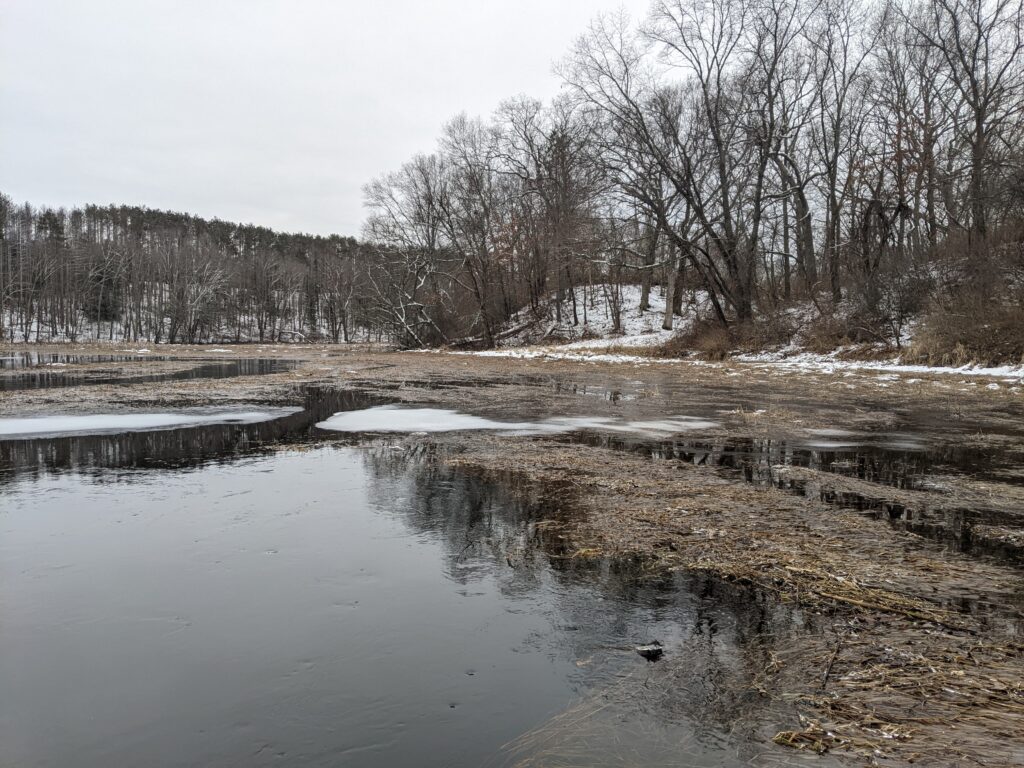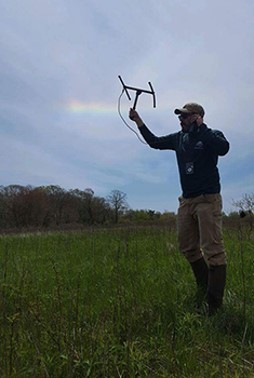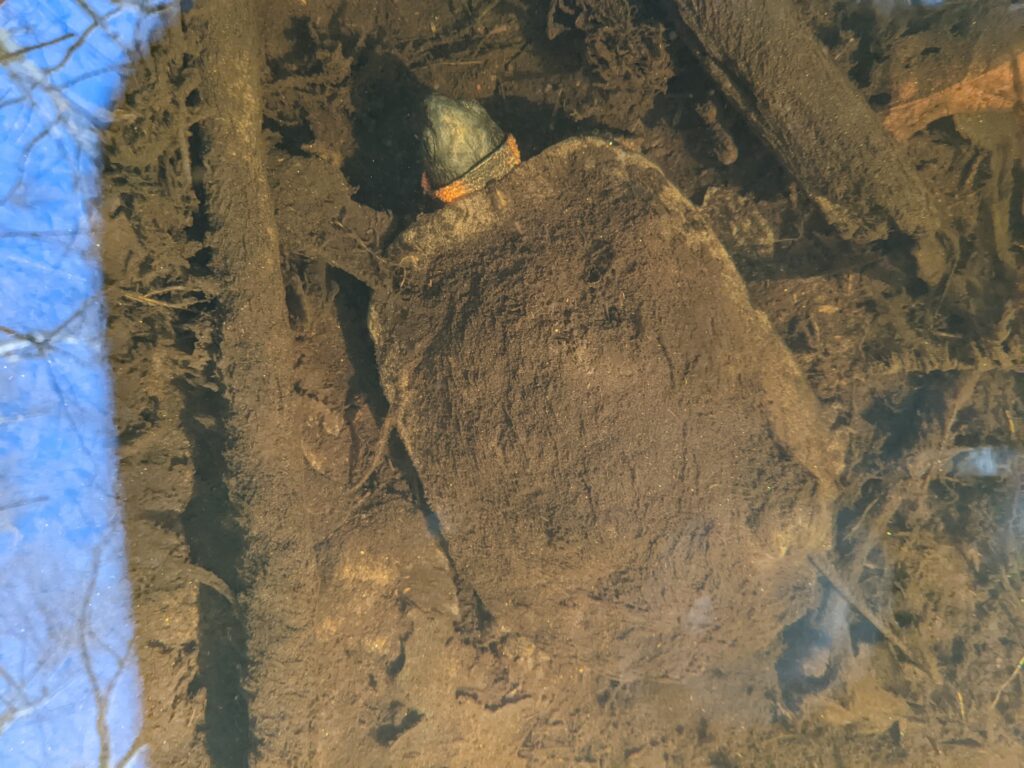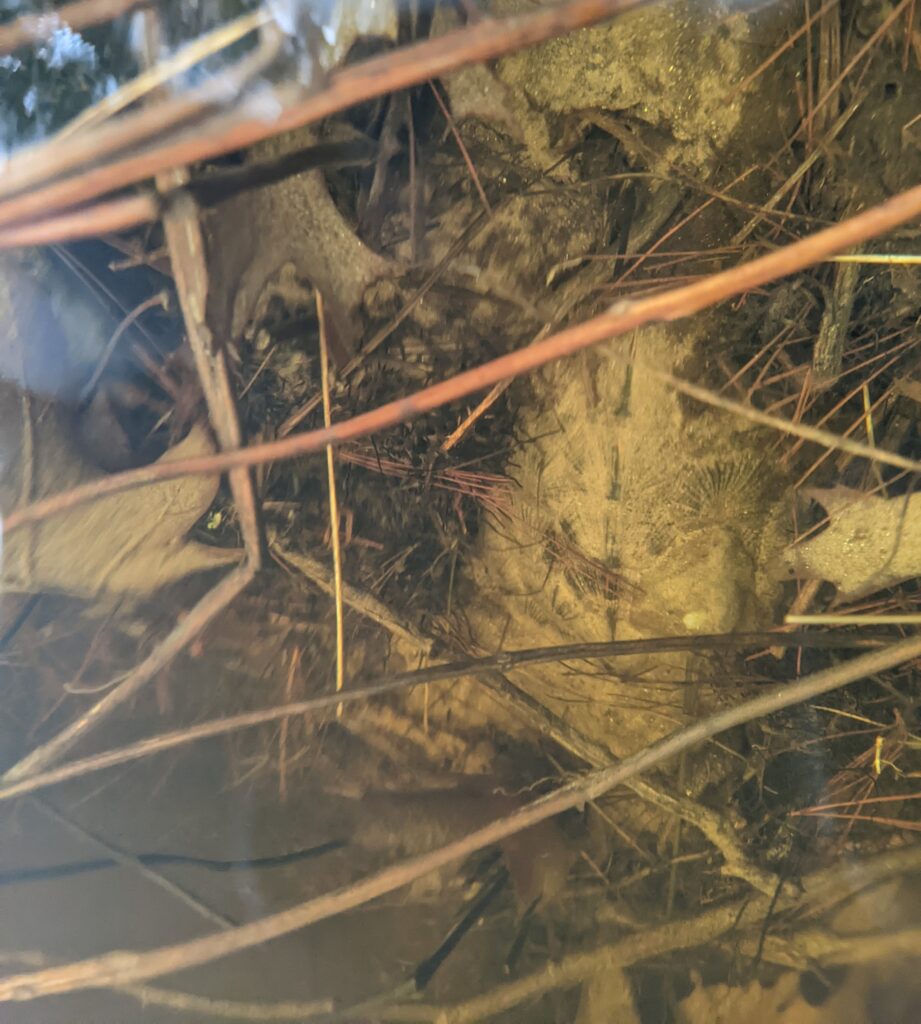
It’s been a fairly mild winter this year here in New England, but there’s still some ice on many ponds and lakes as I write these words in late February. That’s good news for the turtles dreaming away the winter in those chilly water bodies, because a layer of ice helps insulate the water below from rapid temperature changes (up OR down) which can wreak havoc on reptiles’ cold-blooded metabolism. When turtles brumate (that’s what we call hibernation for cold-blooded animals), their vastly reduced metabolism lets them survive for months without needing to surface for food or air – a remarkable adaptation you can learn more about in our blog post about winter wildlife.
What do turtle biologists do while the turtles are in suspended animation below the ice? We still track them! Knowing a turtle’s preferred spot for hibernation tells us a lot about the kinds of habitat we need to protect for those turtles going forward, because a safe place to spend the winter is just as crucial for these long-lived animals as a place with plenty of food or a good spot to lay eggs. Checking on turtles during the winter also gives us a good place to start looking for them in the first months of spring, before they move to other habitats to prepare for egg-laying season.

As you might know, we track our turtles using radiotelemetry – basically, a turtle is carrying a radio that sends out a steady beeping signal on a specific frequency. By tuning our handheld radio receivers to a turtle’s frequency and pointing our directional antenna (see image, right) in different directions, we can hear where the sound is softer or louder, which tells us direction and approximate distance to the turtle. By essentially playing “Marco Polo” and following the direction where the sound is loudest, we can locate exactly where a turtle is.
Even at the best of times, following a turtle’s signal can be a challenging experience, leading turtle trackers over hills, through mires, across thick bramble patches, and into deep water. In winter, many of these complications are magnified by snow, ice, and mud, so our winter turtle trackers are always dressed in extra layers under their waterproof waders. In years like this one when the ice is thin, often the best we can do while ensuring that both humans and turtles stay safe is to find the wetland where a turtle is brumating and estimate its distance from shore.
Sometimes, though, we have a stroke of good luck. Perhaps the ice is thick enough to inch out to a turtle’s hiding place without endangering anyone, or a turtle may have found a spot to hunker down close enough to shore to be visually confirmed. Spotting one of our turtles through a sheen of ice is always a thrilling experience, and we’re excited to share some of those photos with you here on the blog!


